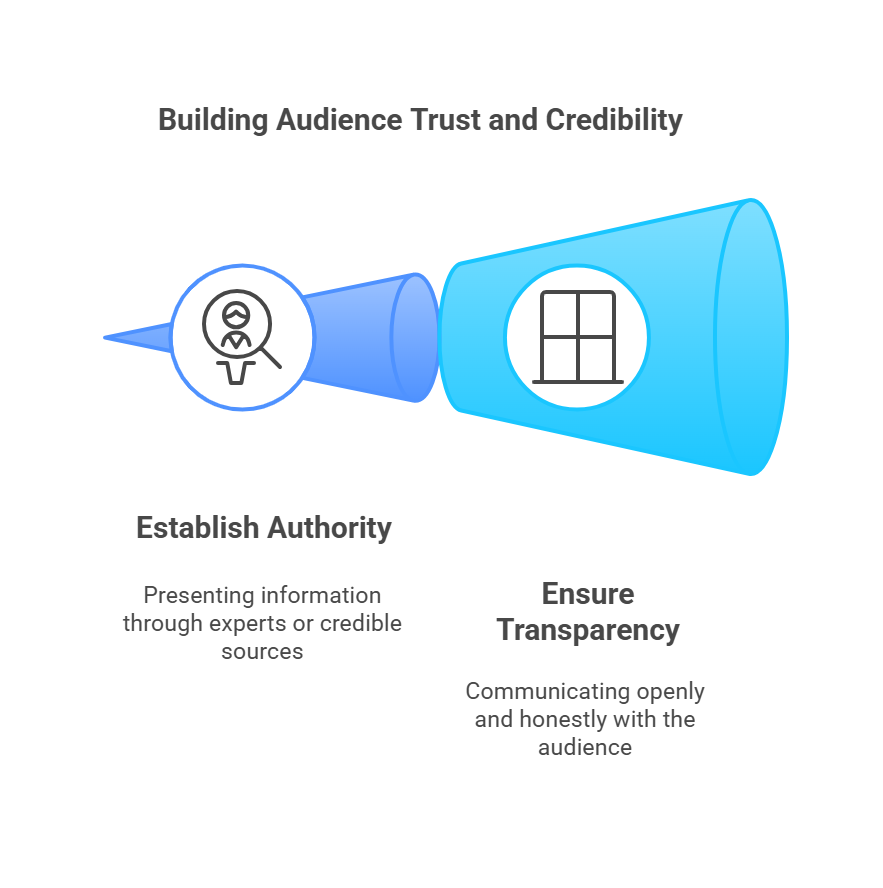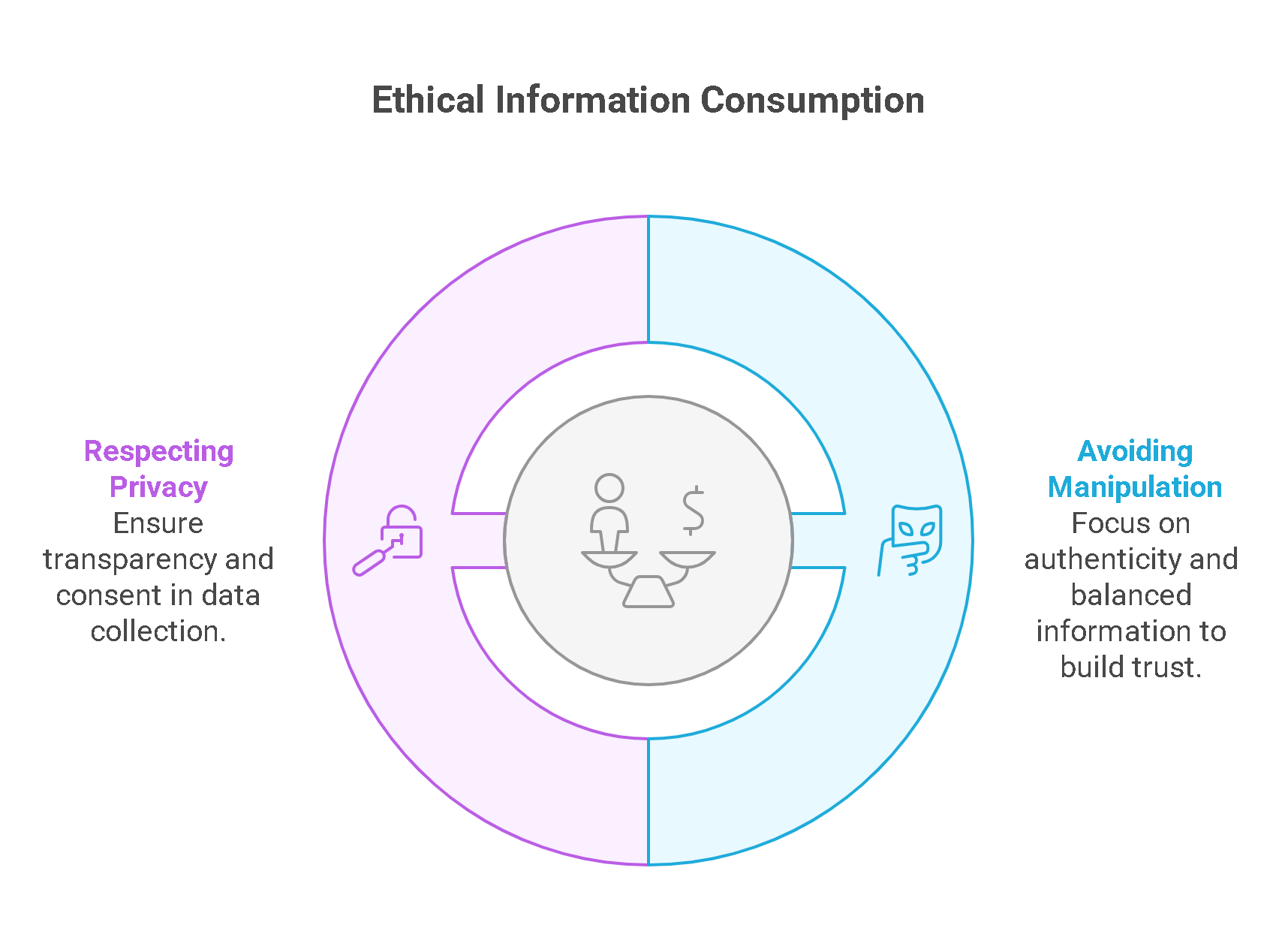Contents
- 1 Understanding Information Consumption Psychology
- 2 Factors Influencing Information Consumption
- 3 Audience Segmentation and Targeting
- 4 Impact of Visuals and Storytelling
- 5 Social Influence and Information Sharing
- 6 Building Trust and Credibility
- 7 Ethical Considerations in Information Consumption
- 8 Measuring Audience Response and Feedback
- 9 Adapting Strategies for Changing Audience Behaviors
- 10 Conclusion and Future Outlook
Understanding Information Consumption Psychology
Defining Information Consumption
Information consumption refers to the way individuals seek, process, and utilize different forms of information. In today’s digital age, the sheer volume of content available can be overwhelming. From news articles to videos, social media posts to podcasts, audiences are constantly bombarded with data. Understanding how people consume this information is crucial for effective communication and engagement.
Consider personal experiences: Have you ever scrolled through your social media feed, only to pause at a striking image or a compelling headline? That’s information consumption in action. It reveals how visual appeal and presentation can capture attention in a split second.
Key elements of information consumption include:
- Relevance: Information that aligns with personal interests tends to be prioritized.
- Clarity: Clear and concise messages are more likely to be understood and retained.
- Accessibility: The ease with which content can be accessed influences consumption patterns.
The Role of Psychology in Audience Understanding
Psychology plays a pivotal role in understanding audience behavior. By delving into psychological principles, communicators can better grasp why certain information resonates more than others.
For instance, consider cognitive biases—these intrinsic mental shortcuts affect how we perceive and interpret information. Familiarity with these biases allows individuals and organizations to craft messages that resonate powerfully. Examples include:
- Confirmation Bias: People tend to favor information that confirms their existing beliefs.
- Scarcity Effect: Limited availability increases the perceived value of information.
By tapping into these psychological elements, marketers and communicators can enhance engagement, driving deeper connections with their audience and ultimately leading to more effective information dissemination.
Factors Influencing Information Consumption
Cognitive Biases and Information Processing
As we continue exploring the psychology behind information consumption, it’s essential to examine the cognitive biases that influence how we process information. These biases can drastically shape our understanding and retention of content. Imagine scrolling through news articles; you might notice yourself gravitating towards headlines that echo your personal beliefs. This phenomenon is a classic example of confirmation bias, where we favor information that aligns with our preconceived notions.
Here are a few common cognitive biases that affect information processing:
- Anchoring Bias: The first piece of information we encounter often serves as a mental anchor, influencing our perception of subsequent data.
- Availability Heuristic: We tend to overestimate the importance of information that comes easily to mind, often due to recent exposure.
Emotional Triggers in Audience Engagement
Equally vital in shaping how we consume information are emotional triggers. When content evokes emotions—be it joy, fear, sadness, or surprise—it becomes more impactful and memorable.
For instance, consider a campaign that shares a heartfelt story about overcoming adversity. Such narratives can create empathy and resonate deeply with the audience.
Key emotional triggers include:
- Fear: Messaging that highlights potential risks or consequences can spur action or consideration.
- Humor: Lighthearted or funny content often boosts engagement and encourages sharing.
By recognizing and leveraging these emotional triggers, communicators can create more engaging and effective narratives that not only attract attention but also foster a lasting connection with their audience.
Audience Segmentation and Targeting
Identifying Different Audience Types
Following the exploration of emotional triggers and cognitive biases, it’s clear that understanding your audience is paramount. One effective way to achieve this is through audience segmentation, which involves categorizing audiences into distinct groups based on shared characteristics.
Think about it: when a marketer sends out a generic email blast, they might not hit the mark with everyone. For instance, a tech company might have different segments such as:
- Tech Enthusiasts: Individuals who are always on the lookout for the latest gadgets.
- Casual Users: People who use technology less frequently and need straightforward solutions.
- Business Professionals: Users who seek efficiency and productivity-enhancing tools.
By identifying these different audience types, marketers can tailor their strategies to resonate more effectively.
Tailoring Information for Specific Segments
Once distinct audience segments are established, the next step involves customizing content to meet their unique needs. Personalized messaging goes a long way in enhancing engagement and retention.
For example, consider a fitness brand:
- Tech Enthusiasts might appreciate detailed insights into wearable technology.
- Casual Users could benefit from simple workout tips that don’t require extensive knowledge.
- Business Professionals might be interested in quick, effective routines that fit a busy schedule.
Tailoring information for these segments not only enriches the audience’s experience but also fosters loyalty and trust. By addressing each group’s specific challenges and interests, businesses can create compelling messages that resonate and inspire action.
Impact of Visuals and Storytelling
Visual Processing and Information Retention
As we dive into the impact of visuals on information consumption, it’s important to recognize that our brains are wired to process images significantly faster than text. Remember a time when a single eye-catching graphic drew you in more than a lengthy article? That’s the power of visual processing at work! Research shows that incorporating visuals can enhance memory retention by up to 65%.
Here are a few key reasons why visuals are so effective:
- Immediate Engagement: Visuals capture attention quickly, making them essential for hook setups.
- Simplification: Complex data becomes more digestible when illustrated through charts or infographics.
- Emotional Appeal: Images can evoke emotions, making messages more memorable.
Storytelling Techniques for Audience Connection
Now, blending visuals with storytelling techniques takes audience engagement to another level. Stories create a narrative that resonates, making the information relatable and engaging.
For instance, consider how a non-profit shares stories of individuals impacted by their programs through videos. This approach not only showcases their work effectively but also fosters a deeper emotional connection with the audience.
Some storytelling techniques to consider include:
- Personal Anecdotes: Sharing relatable experiences that evoke empathy can keep audiences engaged.
- Conflict and Resolution: Every good story presents challenges that lead to satisfying resolutions, driving audiences to invest emotionally.
- Visualization: Using metaphors and imagery can paint pictures that help audiences imagine scenarios vividly.
By leveraging compelling visuals and effective storytelling, communicators can create powerful connections. These elements help not only in conveying information but also in leaving a lasting imprint on the audience’s minds.
Social Influence and Information Sharing
Social Proof and Information Acceptance
Transitioning from the earlier discussion on visuals and storytelling, it’s essential to recognize the significant role of social influence in information sharing. One of the most powerful concepts in this realm is social proof. This psychological phenomenon occurs when individuals look to the actions and opinions of others to determine the validity of information.
Think about it: when you’re shopping online, do you often check product reviews? That’s social proof in action. The testimonials and ratings from fellow consumers greatly influence your purchasing decisions. This principle also applies to sharing information; people are more likely to trust and accept information that has been endorsed or shared widely.
Some actionable ways to harness social proof include:
- User Testimonials: Sharing reviews can enhance credibility.
- Expert Endorsements: Highlighting recommendations from industry leaders can boost acceptance.
- Social Media Shares: The more an idea is shared, the more valid it appears to others.
Virality Factors in Information Spread
Now, let’s explore what makes information go viral. Understanding the factors that contribute to virality can significantly enhance how content is created and shared.
First and foremost, relatable content has a higher likelihood of being shared. For example, a funny meme about everyday struggles connects with many people, making them want to share it with friends.
Key factors contributing to virality include:
- Emotional Resonance: Content that evokes strong emotions is more likely to be shared.
- Simplicity: Easy-to-understand messages spread faster than complex ones.
- Timeliness: Trending topics can rapidly gain traction, capitalizing on existing conversations.
By integrating social proof and understanding the virality factors, communicators can effectively enhance the reach and impact of their information, fostering a more widespread acceptance among diverse audiences.
Building Trust and Credibility
Establishing Authority in Information Delivery
Continuing from our exploration of social influence, it’s crucial to discuss how building trust and credibility is fundamental in information consumption. At the heart of this trust lies the concept of authority. When information is delivered by perceived experts or credible sources, audiences are more inclined to accept and engage with the content.
Think of experts in any field, like doctors or engineers; their insights often carry significant weight. For instance, if a well-respected scientist shares findings about climate change on a platform, followers are likely to take that information seriously.
To establish authority, consider the following:
- Expert Credentials: Highlighting the educational background and professional experience of those delivering the information can enhance credibility.
- Quality Content: Providing well-researched, accurate content consistently helps to build a reputation of reliability.
- Case Studies and Examples: Sharing real-world applications or success stories demonstrates practical authority.
The Role of Transparency in Audience Perception
Equally important in building trust is transparency. When audiences feel that information is presented honestly and openly, they are more likely to develop a favorable perception. Transparency involves not only sharing successes but also admitting limitations or mistakes.
For example, a brand that openly discusses both the strengths and weaknesses of its product will often foster more trust with consumers than one that only highlights positives.
Key elements of transparency include:
- Clear Communication: Avoiding jargon and being straightforward enhances understanding and trust.
- Open Dialogue: Encouraging feedback and actively responding to inquiries shows audiences that their opinions matter.
- Disclosure of Sources: Providing clear references and citations builds credibility and allows audiences to verify information.

By establishing authority and embracing transparency, communicators can effectively enhance audience trust, fostering a loyal and engaged community that values their insights.
Ethical Considerations in Information Consumption
Avoiding Manipulative Tactics
As we continue our discussion on building trust and credibility, it’s crucial to address the ethical considerations surrounding information consumption. One of the primary concerns in this digital age is the use of manipulative tactics. While engaging audiences is essential, it’s equally important to do so ethically.
Consider a time when you encountered an advertisement that played on your fears, suggesting that without their product, you would face dire consequences. Such tactics may lead to short-term gains but ultimately erode trust. Audiences can quickly spot manipulation, and this can tarnish reputations.
To avoid falling into manipulative traps, it’s critical to:
- Focus on Authenticity: Always aim for genuine interactions rather than pressure-driven sales tactics.
- Present Balanced Information: Sharing both pros and cons ensures a fair representation of the subject.
- Encourage Informed Decision-Making: Providing ample resources allows audiences to derive their conclusions.
Respecting Audience Privacy and Consent
A vital aspect of ethical practices is respecting audience privacy and gaining proper consent. In an era where data is often collected without explicit knowledge or permission, the importance of transparency cannot be understated. For instance, think about how you feel when a website requests more personal information than necessary. It can lead to discomfort and mistrust.
Key strategies to uphold privacy and consent include:
- Clear Communication: Always explain how user data will be stored and used, ensuring clarity in terms of service agreements.
- Requesting Consent: Obtain explicit consent before collecting any personal data, making it easy for users to opt out if desired.
- Data Minimization: Collect only what is necessary for functionality, reducing risks associated with data breaches.

By avoiding manipulative tactics and respecting audience privacy, organizations can cultivate a foundation of ethical practice that enhances trust and fosters long-lasting relationships with their audience.
Measuring Audience Response and Feedback
Utilizing Analytics for Insights
Transitioning from ethical considerations, an integral step in enhancing audience engagement is measuring response and feedback. To effectively refine communication strategies, organizations must harness the power of analytics. In today’s digital landscape, tools and metrics are available to provide invaluable insights into audience behavior and preferences.
For example, think about that time you posted a blog and found yourself eagerly checking the analytics to see how it performed. Metrics such as page views, time spent on the page, and social media shares can tell a compelling story about what resonates with readers.
Consider the following key analytics to focus on:
- Engagement Rates: How often do users interact with your content via likes, shares, or comments?
- Bounce Rates: Are users leaving your site after visiting a single page? This can indicate a lack of interest or relevance.
- Conversion Rates: Are your audiences taking desired actions, such as signing up for a newsletter or making a purchase?
Iterative Improvements Based on Feedback
Once insights are gathered, the next step is making iterative improvements based on feedback. Continuous improvement is crucial for maintaining relevance and effectiveness in communication.
For instance, suppose audience analytics indicate that specific topics garner more engagement. In that case, it would make sense to produce more content in that particular area. Similarly, if feedback points out a lack of clarity in messaging, adjustments can be made to enhance understanding.
Here are some strategies for implementing iterative improvements:
- Regular Review Cycles: Set aside time to assess performance and discuss potential adjustments to your content strategy.
- Audience Surveys: Directly asking your audience what they like or dislike can yield actionable insights.
- A/B Testing: Experimenting with different messages or formats can help identify what works best.
By leveraging analytics to understand audience responses and making iterative improvements based on that feedback, organizations can foster deeper connections and continually enhance their communication strategies.
Adapting Strategies for Changing Audience Behaviors
Staying Current with Trends
Building on the importance of measuring audience response, it’s essential to adapt strategies for changing audience behaviors. The digital landscape evolves rapidly, and staying current with trends is a vital component of effective communication.
Think back to how many trends have emerged just in the past few years! Whether it’s the rise of short-form videos on platforms like TikTok or the increased demand for authentic and unfiltered social media content, being in tune with these changes is key.
To stay ahead of the curve, consider:
- Regular Market Research: Staying updated with industry reports and publications can offer valuable insights into emerging trends.
- Social Listening: Monitoring social media platforms helps gauge audience sentiment and topics of interest in real-time.
- Networking: Engaging with professionals in your field can lead to discovering innovative strategies that resonate with audiences.
Flexibility in Information Delivery Approaches
Once you identify current trends, the next step is to remain flexible in your information delivery approaches. Adapting to changing preferences allows organizations to engage their audiences effectively.
For instance, if a previously popular format like long articles is now overshadowed by video content, it’s crucial to pivot accordingly. Embracing diverse formats is essential for catering to varying preferences.
Key strategies for flexibility include:
- Multichannel Engagement: Utilize different platforms—social media, blogs, podcasts—to reach wider audiences.
- Tailored Messaging: Adjust messaging styles based on audience preferences, whether engaging humorously or informatively.
- Iterative Content Strategy: Regularly review and adapt your content strategy to align with current audience interests and platforms.
By staying current with trends and remaining flexible in delivery methods, organizations can ensure that their communication strategies not only connect with audiences but also evolve alongside them, fostering stronger relationships and lasting engagement.
Conclusion and Future Outlook
Recap of Key Insights
As we wrap up our exploration of information consumption psychology and its various facets, it’s essential to recap the key insights we’ve covered. We discussed how understanding audience behavior, leveraging cognitive biases, and utilizing emotional triggers can enhance engagement. We also highlighted the importance of audience segmentation and the essential role of visuals and storytelling in capturing attention.
Moreover, we emphasized the need for ethical communication practices, the effectiveness of analytics in driving improvements, and the necessity of adapting strategies in response to changing audience behaviors.
To summarize:
- Engagement: Use emotional and cognitive insights to engage audiences authentically.
- Flexibility: Stay adaptable in the face of emerging trends and preferences.
- Trust: Build credibility through transparency and ethical practices.
Forecasting Future Trends in Information Consumption
Looking ahead, several trends are likely to shape the future of information consumption. First, the increasing influence of artificial intelligence will facilitate personalized content delivery, tailoring information to individual preferences on a deeper level. Imagine receiving content that is not only relevant but also proactively aligned with your interests!
Additionally, immersive technologies such as virtual and augmented reality can transform storytelling, creating engaging experiences that resonate more profoundly with audiences.
Key future trends to watch for include:
- Increased Use of Interactive Content: As audiences seek more engaging experiences, interactive formats such as quizzes and polls will become more prevalent.
- Focus on Sustainability: With growing awareness of social issues, audiences will favor brands and content that prioritize ethical practices and sustainable messaging.
- Evolving Data Privacy Standards: As regulations tighten globally, organizations will need to be transparent regarding data usage while maintaining audience trust.
By recognizing these emerging trends, organizations can proactively adapt their strategies to engage and connect with audiences more effectively in the dynamic landscape of information consumption.








